Author: Marshall Schott
With the exception of a few very specific styles, clarity is generally viewed as an asset in beer, an indication of quality process and a brewer’s attention to detail. However, there are those that contend a beer’s level of brightness has no bearing on the qualities that actually matter – aroma, flavor, and mouthfeel – chocking it up to nothing more than vanity.
Indeed, multiple xBmts have shown that blind participants are largely unable to distinguish beers that has been cleared by various means, both chemically and mechanically, from hazier versions. While this may be validation for some, I maintain a love of beautifully clear beer and am interested in methods to achieve this goal, of which there are many.
A commonly used chemical fining agent used by brewers is Clarity Ferm, also known as Brewers Clarex, which is an enzyme that breaks down haze causing proteins. In addition to aiding in clarity, Clarity Ferm is also said to significantly reduce gluten content without impacting other perceptible qualities, making it an ideal solution for gluten-sensitive beer lovers.
Having never used Clarity Ferm in my brewing, I’ve been curious as to its effectiveness. While results from our xBmt comparing Clarity Ferm to gelatin fining were non-significant, I was interested to see how the product compares to doing nothing at all, not only in terms of perceptible characteristics, but gluten content as well.
| PURPOSE |
To evaluate the differences between a beer fined with Clarity Ferm and the same beer that received no finings.
| METHODS |
I designed a simple German Pilsner for this xBmt in hopes it would allow any differences caused by the variable to shine.
Edith
Recipe Details
| Batch Size | Boil Time | IBU | SRM | Est. OG | Est. FG | ABV |
|---|---|---|---|---|---|---|
| 5.5 gal | 60 min | 32.1 IBUs | 4.4 SRM | 1.053 | 1.014 | 5.1 % |
| Actuals | 1.053 | 1.014 | 5.2 % | |||
Fermentables
| Name | Amount | % |
|---|---|---|
| Pelton Pilsner-style Malt (Mecca Grade) | 9 lbs | 83.72 |
| Vanora Vienna-style Malt (Mecca Grade) | 1.75 lbs | 16.28 |
Hops
| Name | Amount | Time | Use | Form | Alpha % |
|---|---|---|---|---|---|
| Horizon | 11 g | 60 min | First Wort | Pellet | 14.1 |
| Tettnang | 30 g | 30 min | Boil | Pellet | 3.5 |
| Tettnang | 30 g | 5 min | Boil | Pellet | 3.5 |
Yeast
| Name | Lab | Attenuation | Temperature |
|---|---|---|---|
| Harvest (L17) | Imperial Yeast | 72% | 50°F - 60°F |
Notes
| Water Profile: Ca 75 | Mg 1 | Na 10 | SO4 84 | Cl 70 |
Download
| Download this recipe's BeerXML file |
I prepared for this 10 gallon batch no sparge brew by first collecting the full volume of filtered water in my mash tun.
Once that was done, I weighed out and milled the grain.
With my heat stick timed to turn on a couple hours ahead of time, I awoke the following morning to hot strike water and proceeded to mash in.
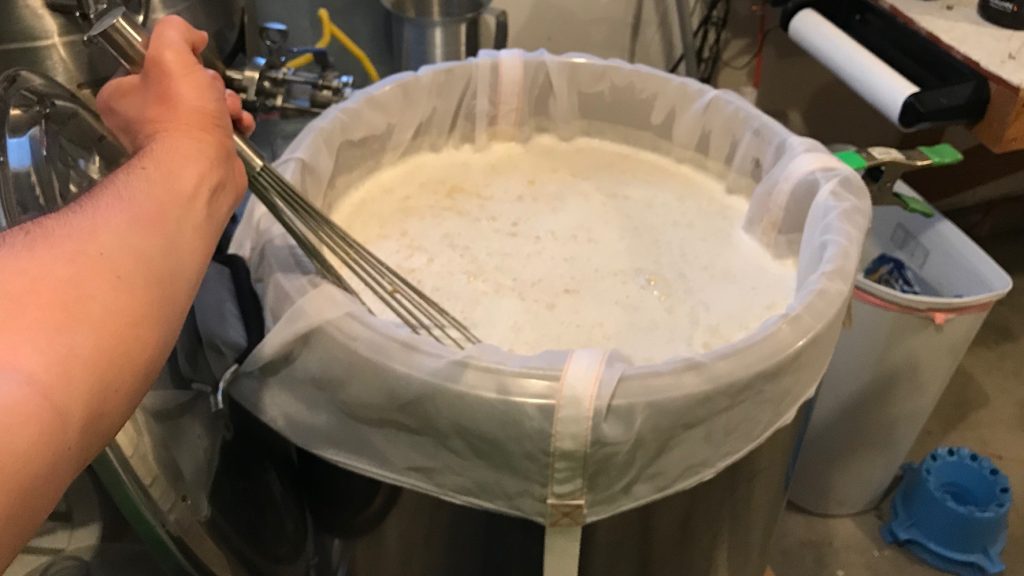
When the grains were fully incorporated, I checked my mash temperature and noticed it was just a touch lower than my planned 152°F/67°C.
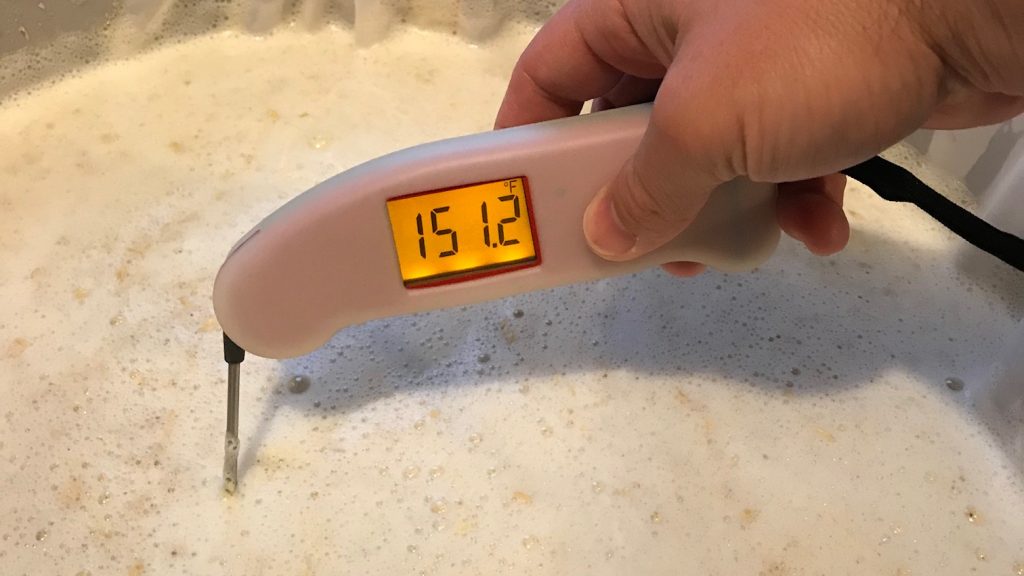
The mash rested for 60 minutes, after which I began collection of the sweet wort.
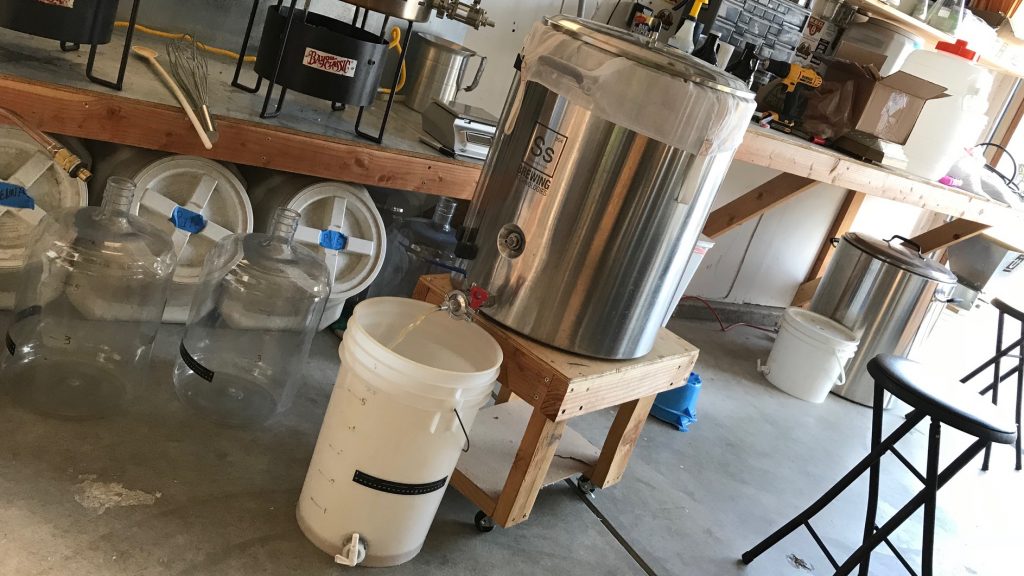
After transferring the wort to my kettle, I hit the flame on my burner then moved on to weighing out the kettle hop additions.
The wort was boiled for 60 minutes with hops added at the times stated in the recipe.
Once the boil was completed, I quickly chilled the wort to slightly warmer than my groundwater temperature.
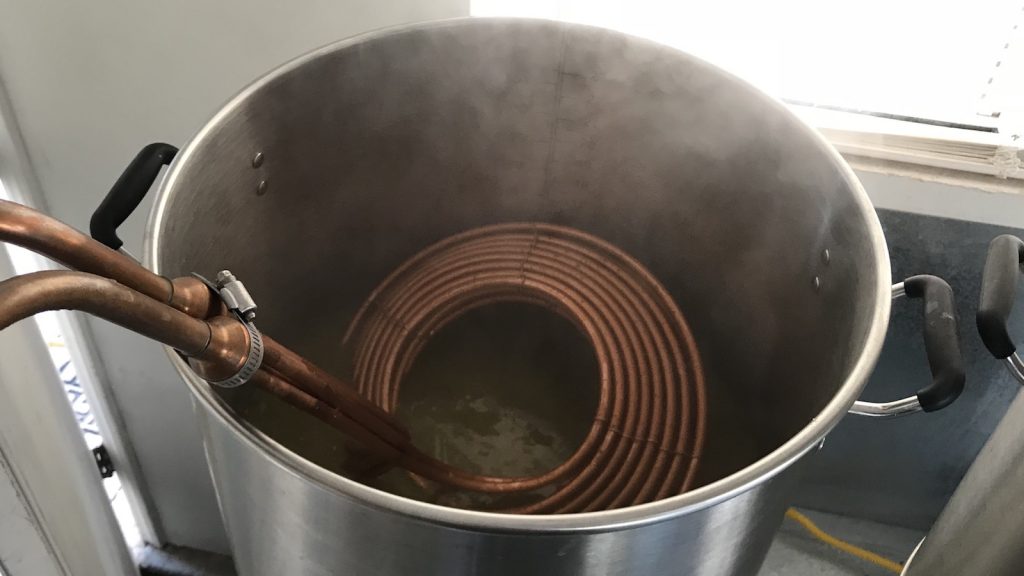
A refractometer reading showed the OG was right where I wanted it to be.
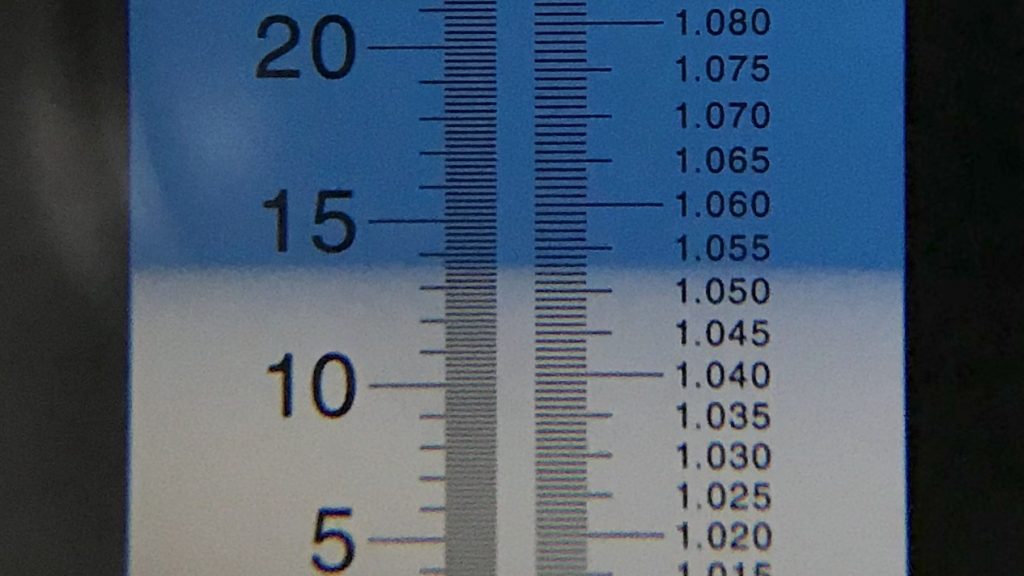
Equal amounts of wort were racked to separate sanitized Brew Buckets.
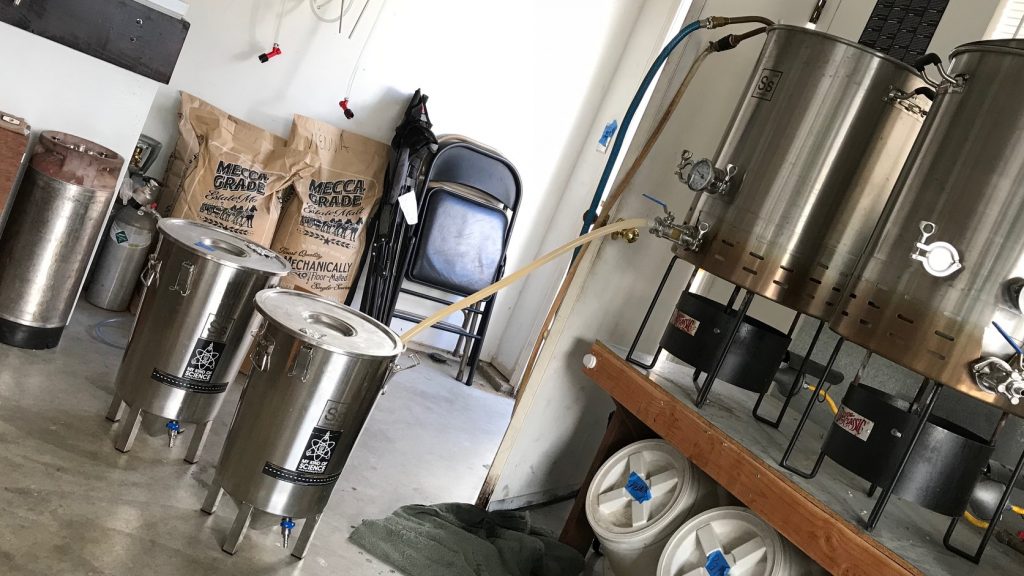
The filled fermentors were placed in my chamber to finish chilling, at which point I made a couple vitality starters with Imperial Yeast L17 Harvest.
When I returned 4 hours later, both worts had stabilized at my desired 66°F/19°C fermentation temperature, so I pitched a starter into each, added the Clarity Ferm to only one batch at this time as well.
Both batches were actively fermenting 8 hours later and continued on similarly over the following week. At 10 days post-pitch, I took a hydrometer measurement revealing both beers had reached the same FG.
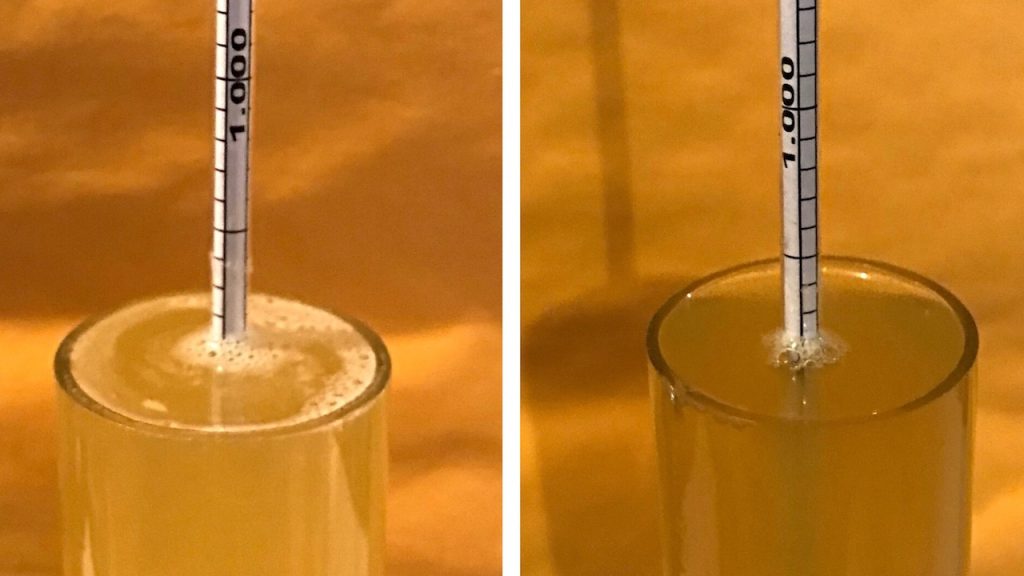
After swapping the airlocks with CO2 filled BrüLoonLocks, I reduced the temperature in my chamber to 32°F/0°C for cold crashing.
Two days later, I racked the beers to kegs.
Samples of either beer at this point were identical in appearance.
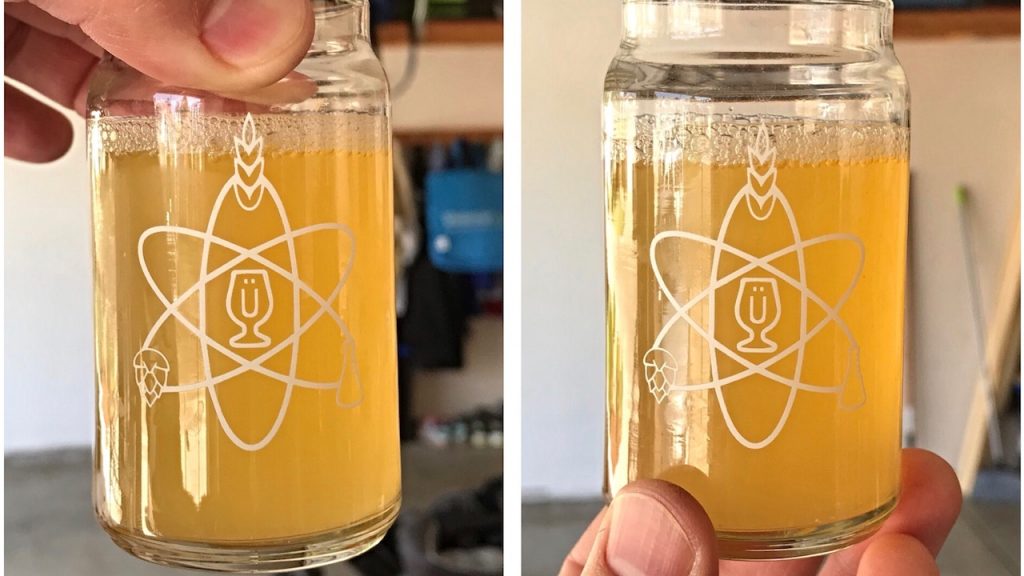
The kegged beers were placed in my cool keezer and burst carbonated overnight before I reduced the gas to serving pressure. Given the variable in this xBmt, I thought it would be prudent to lager the beers for a few weeks in order to give the Clarity Ferm time to work. Oddly, multiple samples taken during that time showed far less difference than I expected, as both beers maintained a fairly noticeable haze. I finally began collecting data after 1 month of lagering, a point at which the beers did look at least slightly different.
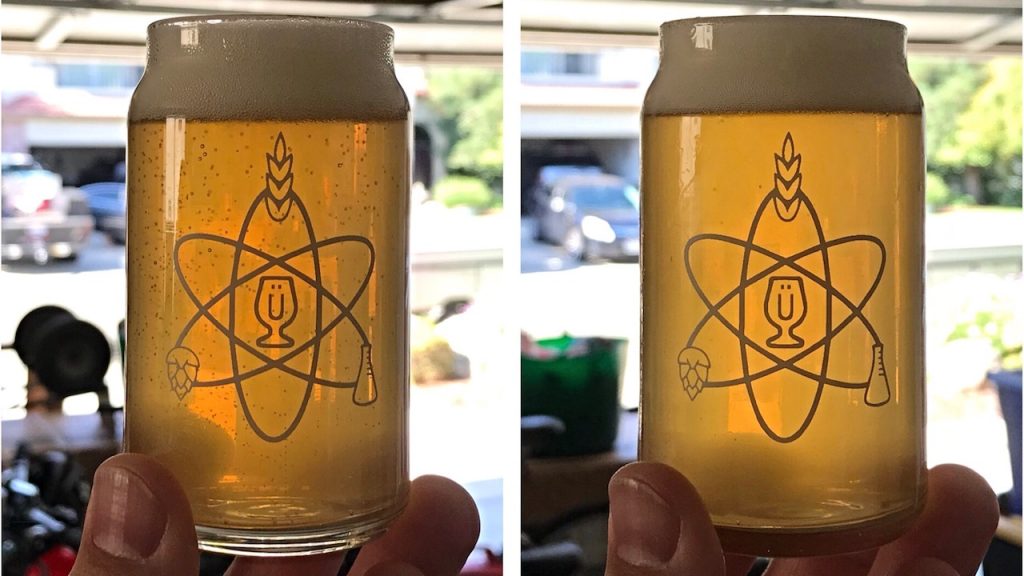
| RESULTS |
A total of 21 people of varying levels of experience participated in this xBmt. Each participant was served 2 samples of the Clarity Ferm beer and 1 sample of the non-fined beer in different colored opaque cups then asked to identify the unique sample. At this sample size, 12 tasters (p<0.05) would have had to identify the unique sample in order to reach statistical significance, though only 5 (p=0.88) made the accurate selection, indicating participants in this xBmt were unable to reliably distinguish a Pilsner fined with Clarity Ferm from one that was not fined at all.
My Impressions: From initial tastes of hydrometer samples through multiple blind triangle attempts, I never detected a perceptible difference between these beers. To my palate, they had the exact same aroma, flavor, and mouthfeel. The recipe was money, I struggled to keep my hands off of it so as not to pull a Ray. Crisp and refreshing with a bready malt character that was beautifully balanced by the delicious flavor of Tettnanger hops. And despite being fermented with a traditional lager yeast strain at ale temperature, the beer was super clean with no apparent esters or phenols. Definitely will brew again!
| DISCUSSION |
Brewers who prefer their beer to be clear have available to them various options, from mechanical filtration setups to chemical agents such as gelatin and, our focus today, Clarity Ferm. Given the fact Clarity Ferm is an enzyme that breaks down certain proteins, it seemed more than plausible that its use would have some noticeable impact on beer characteristics when compared to a non-fined beer. However, inline with past xBmts on other fining agents, tasters were unable to reliably distinguish the fined sample from the non-fined sample in in this xBmt.
Considering these results along with those from past fining and filtration xBmts, I’m left even more convinced the argument that such practices strip beer of desirable characteristics is nothing more than conjecture. While the Clarity Ferm beer did clear a very slight degree more than the non-fined version, I was surprised by how slowly it worked and wondered if perhaps something else was at play.
As someone who very much enjoys consuming gluten products, I’m nowhere near an expert on the matter and had to do a bit of research to figure some stuff out. I learned when it comes to gluten, beer can be labeled either gluten-free or gluten-reduced, the former requiring production with ingredients that contain no gluten while the latter is reserved for products that have less than 20 ppm gluten. Interested in the claim Clarity Ferm can be used to make gluten-reduced beer, I reached out to Imutest, makers of in-home gluten tests, who offered to send me a couple of their Gluten-In-Food kits to test these beers.
Making sure to follow the instructions exactly as written, I tested the gluten levels of both beers. According to Imutest, the test kits they sent are sensitive enough to detect gluten levels up to 20 ppm, perfect since that’s what we need to be under in order to say a beer is gluten-reduced. For the tests I received, a pink spot on the left side of the test area (T) would indicate the presence of gluten. Surprisingly, neither beer produced even the hint of such a spot.
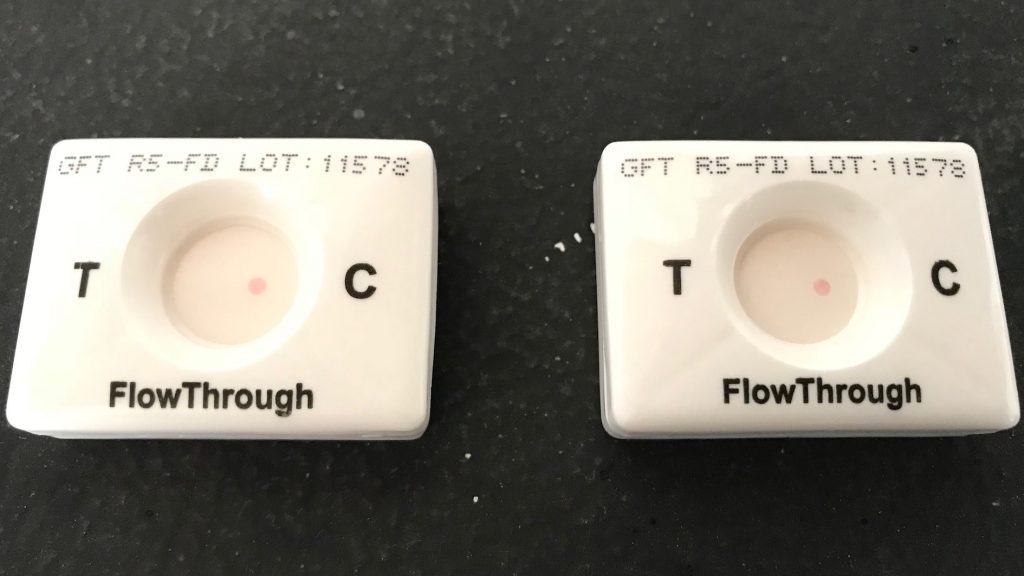
It’s entirely possible that, despite my ardent adherence to the instructions and the fact the control spot (C) indicated everything was working right, I screwed something up that led to a false-negative result. However, when I researched gluten levels in beer, I discovered those produced with all barley can naturally have levels below 20 ppm, while higher percentages of wheat malt tend to yield higher gluten levels.
Since I’m not at all concerned about gluten, those test results have no influence on my opinion about Clarity Ferm. What does is its ability to clear beer, which it didn’t do very well at all, nowhere near as effective as fining with gelatin, which also happens to be much more easy on the wallet. Out of curiosity, once data was collected, I hit each beer with gelatin and let it work for about 36 hours…
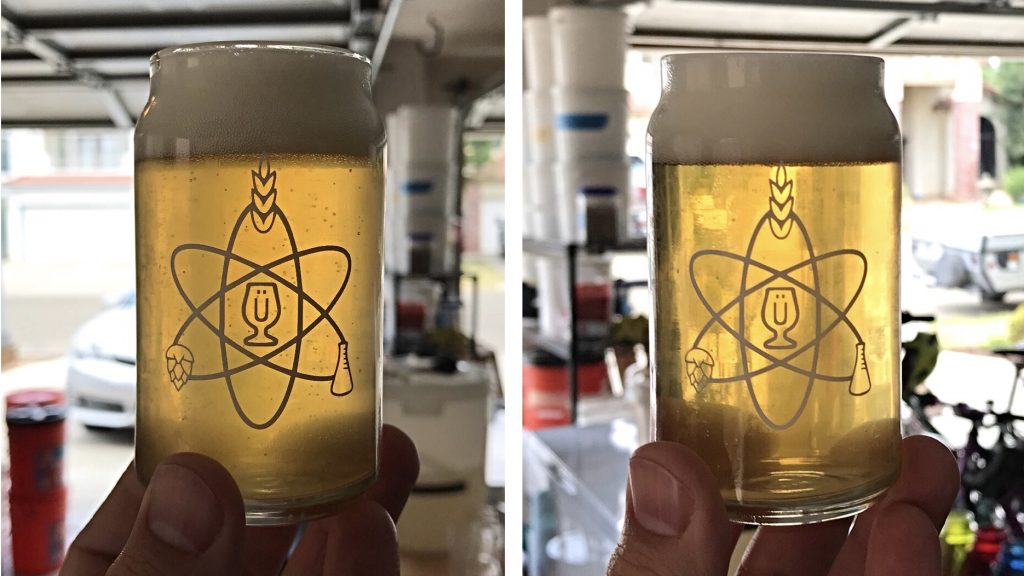
Oddly, while the Clarity Ferm beer was slightly clearer than before, it maintained more haze than the batch that wasn’t fined with Clarity Ferm. I think I’ll stick with what works.
If you have any thoughts about this xBmt, please do not hesitate to share in the comments section below!
Support Brülosophy In Style!
All designs are available in various colors and sizes on Amazon!
Follow Brülosophy on:
FACEBOOK | TWITTER | INSTAGRAM
If you enjoy this stuff and feel compelled to support Brulosophy.com, please check out the Support page for details on how you can very easily do so. Thanks!


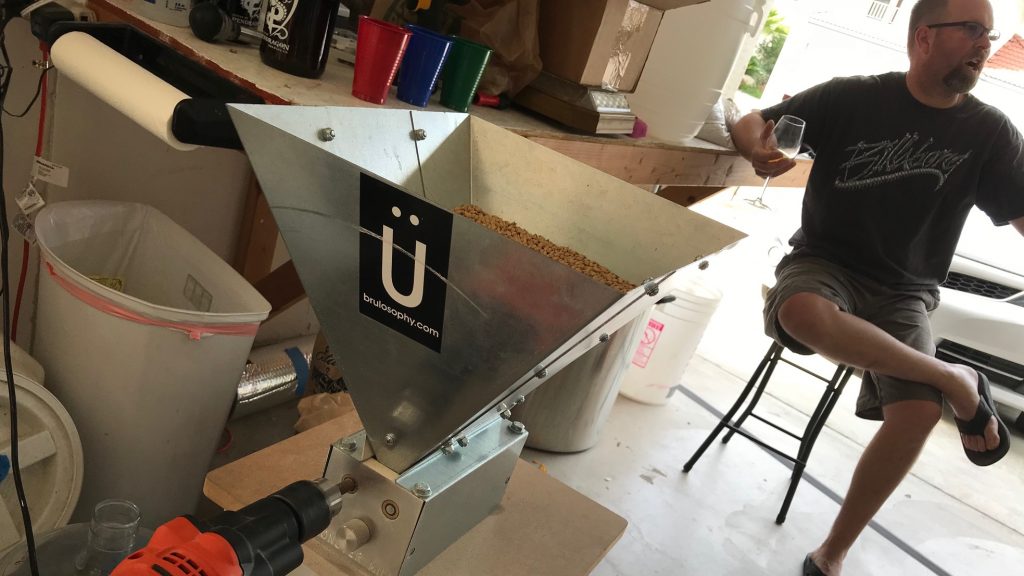
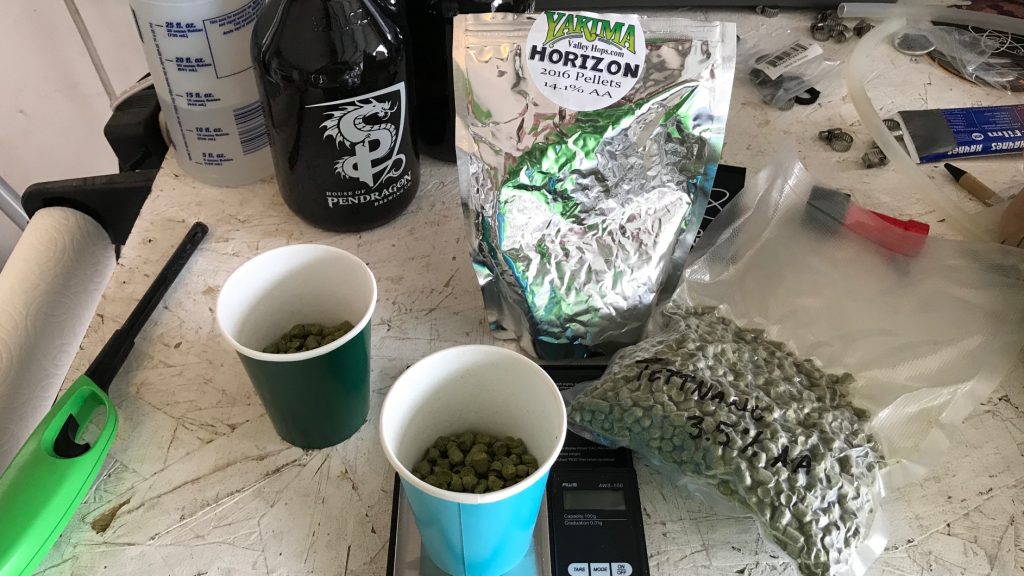
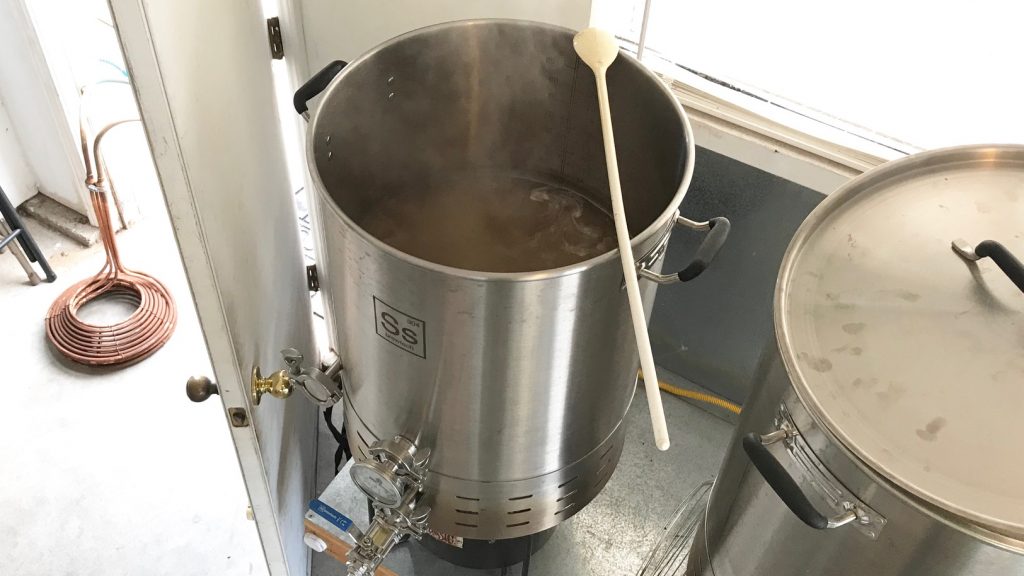
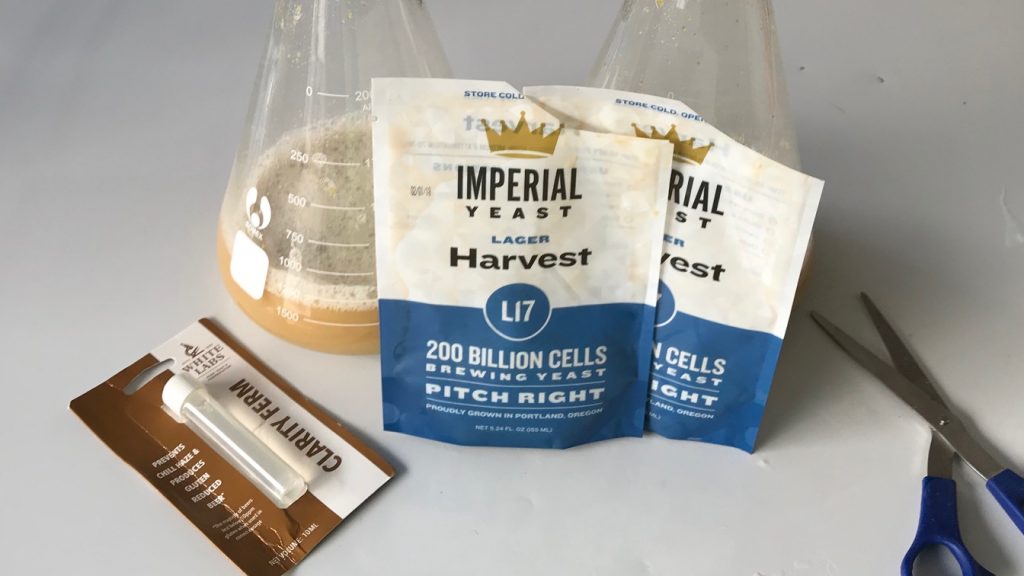
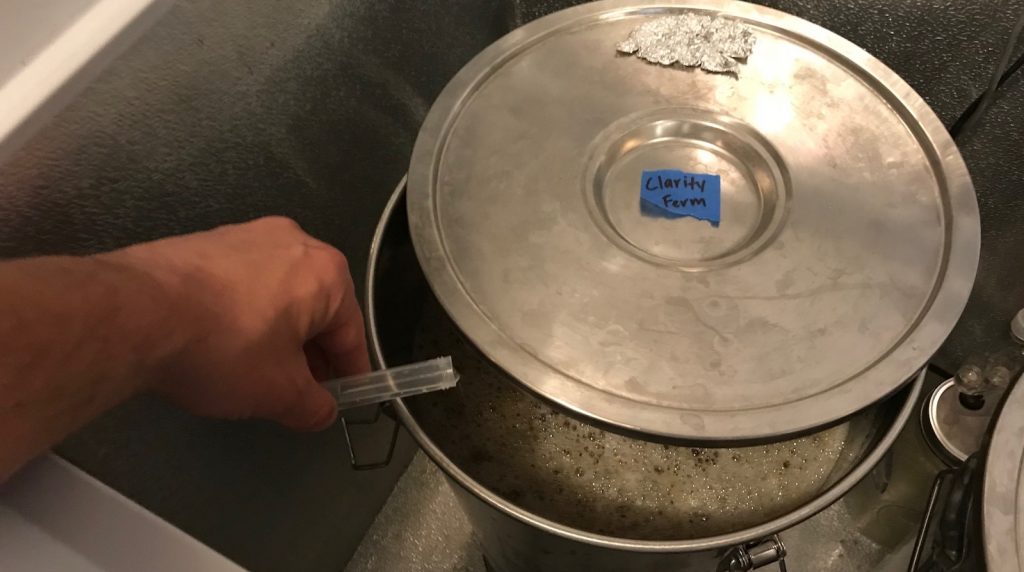
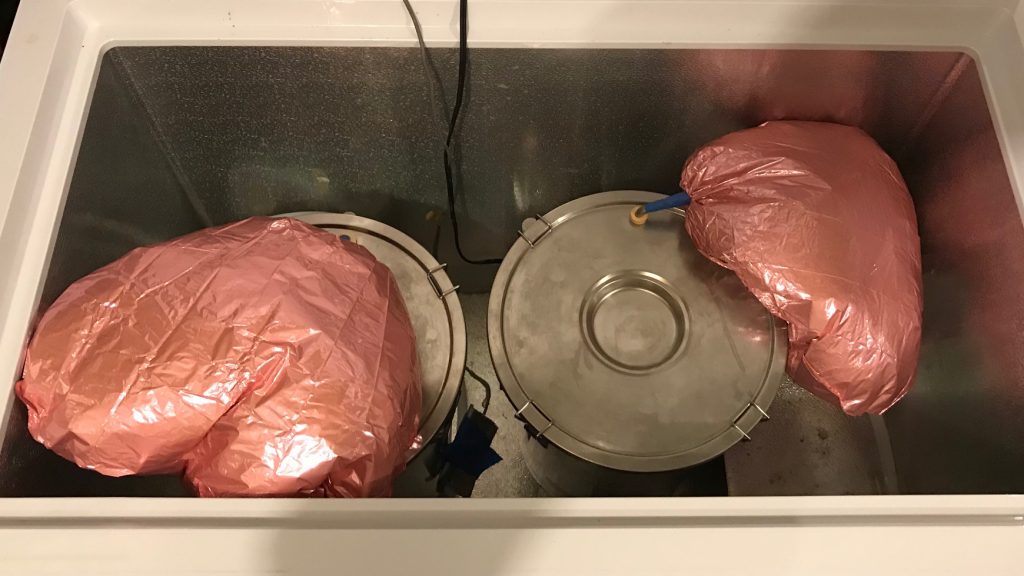

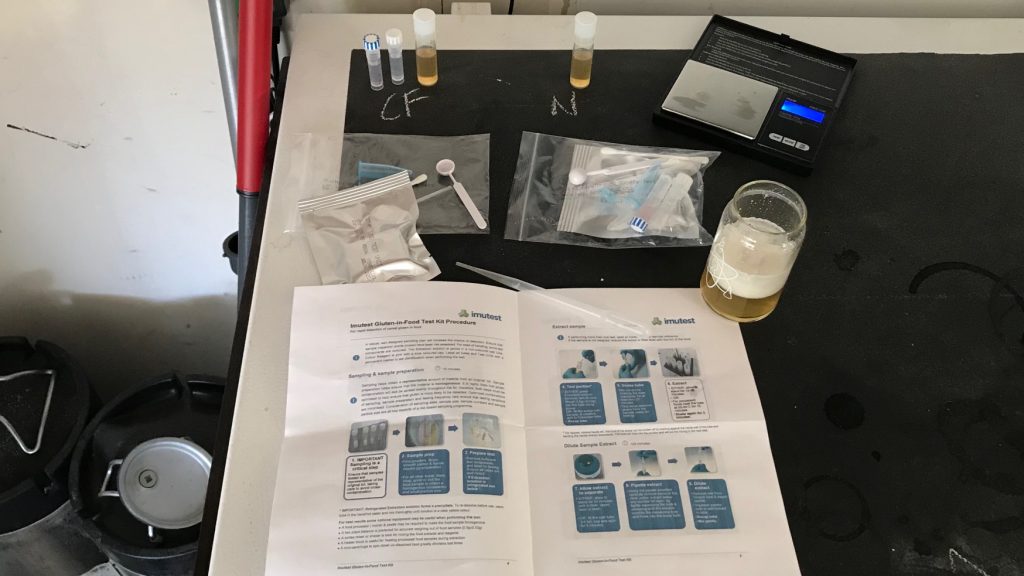










18 thoughts on “exBEERiment | Impact Fining With Clarity Ferm Has On A German Pils”
Since gelatin consists partially of proteins, wouldn’t the Clarity Ferm break it down, and destroy the clearing properties of it?
Great work Marshall! My local brewery markets its clarity-ferm’d beer as *gluten-free*, but that may be a UK thing.
I’ve used Clarity Ferm a handful of times to make beer for my sister in law who is celiac. She typically can have 2 or 3 before she starts to get uncomfortable but she is now uber sensitive to gluten. For people who are more on the gluten intolerant side of things it definitely can work so they can enjoy a few beers without getting sick.
I’ve been asked to make a keg or two for a distant relative’s party. A bunch of them are celiac as well. Have you tried millet or something else like it as a base?
I’m worried that the Clarity Ferm won’t handle the job by itself.
Awesome to hear I’m not the only one with this issue. 🍻
I’ve looked at some alternative grains such as millet, buckwheat, etc but have yet to pull the trigger on trying something out. I will definitely say that it only makes it gluten reduced. If you have family members who are celiac they need to be aware of this. Depending on their sensitivity they may or may not be ok.
Clarity ferm + gelatin has been a great combo for me. Before using clarity ferm my beer often had chill haze
I use Clarity Ferm in my friends beer for his brother. We found 1 dose didn’t quite do it but 2 doses seemed to work quite well for making the beer drinkable and didn’t notice any meaningful change. Makes the beer more expensive but otherwise had no discernible impact on drinkability.
Is Harvest equivalent to W34/70? I have fermented that warm a couple of times, and it remained clean but kicked off a haze that seemed to laugh at all fining agents.
No, that’s Global. Harvest is apparently sourced from Ayinger.
Harvest is Augustiner
I’m not sure and I dont want to be negative, but the general flavour of your comentary and the results you seem to be looking for, suggest to me that you arent 100% clear as to what Brewers Clarex is actually for.
Its just for chill haze… not for other haze. In order for it to make a difference, you have to have a beer that would develop chill haze in the first place.
And TBH, its barely going to make a difference in a beer thats less than diamond bright to begin with. Diamond bright at room temp, a little hazy when chilled… thats what Clarex is for. Just going on the photos, neither of those beers was clear enough in the first place for it to make a worthwhile difference. Not that they were bad – just not clear enough for Clarex to really show through.
I’m a fussy bastard – When I make a beer thats supposed to be clear, It needs to be bloody clear! I filter most brews on spec. I oftern use PVPP as an aide to combat chill haze – and have also often used Brewers Clarex for this purpose… and thats where they do their job – in filtered diamond bright beers. Not so much in beers that have been extensively lagered to brightness… “your chill haze fell to the bottom of the fermenter and you left it there” – But in filtered beers.
I’m coeliac and quite literally regard clarity ferm and equivalent a miracle cure. I’m super sensitive but can brew any beer – inc. high wheat Hefe and use a UK product which is essentially concentrated clarity ferm (much cheaper!) to treat my beer. Never had a reaction in three years and over 1000litres of beer.
I agree that it’s purpose is for chill haze and can’t comment on that as I don’t drink my beer that cold. However, great for reducing gluten!
Hello james, I too am in the UK. Please would you let me know what product you use. Thanks very much, Tom
Hi Tom, I use the Malt Miller’s NBS clarity. Not had a problem using the specified dosage, though I do slightly increase the amount for high wheat beers as an insurance policy:
https://www.themaltmiller.co.uk/product/nbs-clarity-15ml/
I used polyclar once, and it worked pretty well. The beer had a diacetyl issue, but since it was bottle-conditioned, it cleared up after time. It was a Cal. common beer, probably fermented too cool for style, and should have done a diacetyl rest.
In order to test gluten content in beer you need a different method. Since gluten in fermented foods and beverages is partially hydrolyzed the test kits like the one you used will always show lower content than in reality. Competitive ELISA test is a vaild method to check gluten levels in beer but it requires some more sophisticated equipment. Cheers!
Thanks a lot BigMack – very quick answer!
Hi team, i use it in all my beers as im highly sensitive to gluten. It does work, you just need to make sure you use the right volume. 1 vile is often not enough. White labs have a calculator on their website. Happy brewing from Oz.